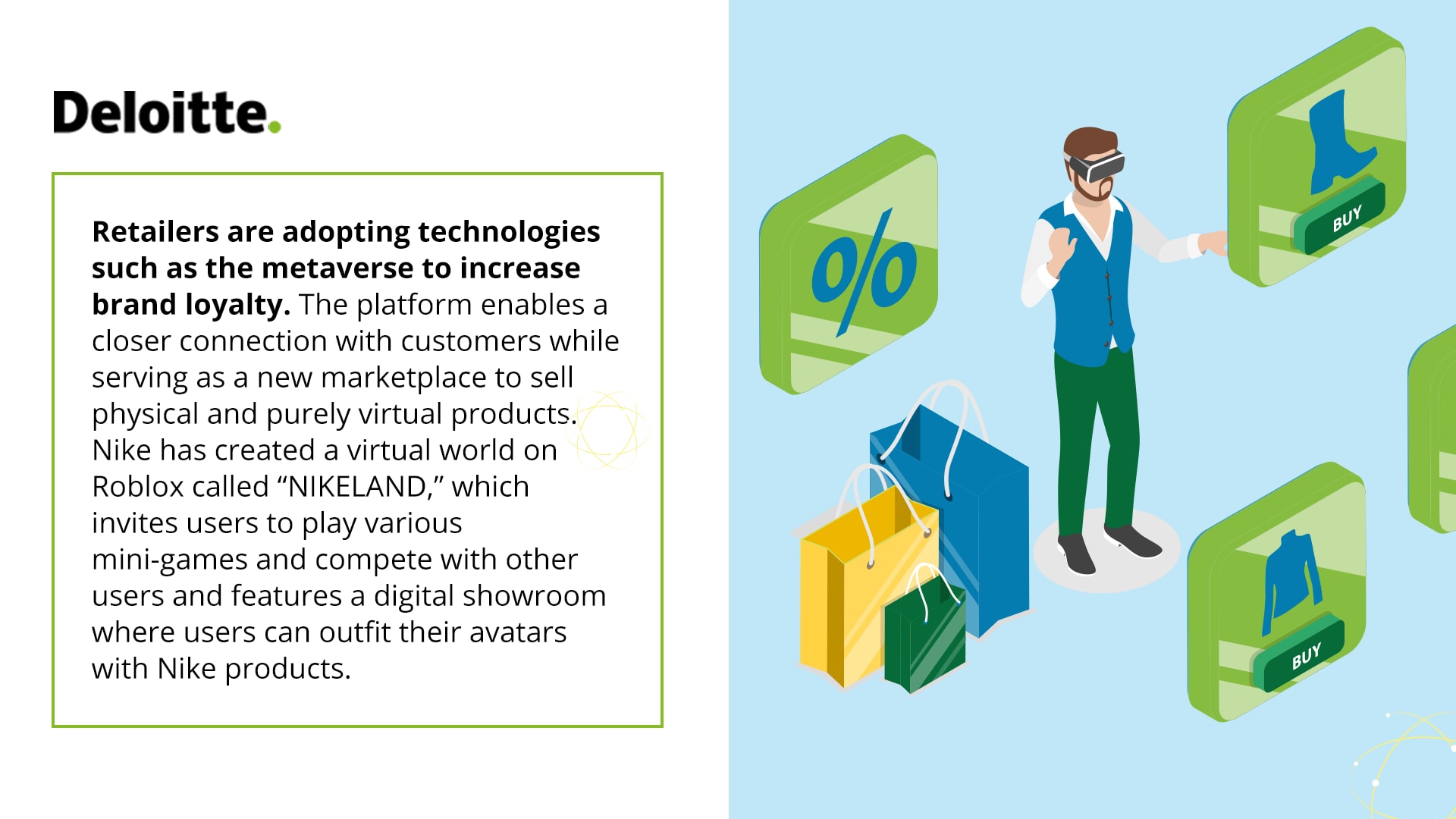Looking Beyond the Retail Supply Chain | Deloitte US has been saved

While it has become common in recent years to explain away barriers to product availability, delivery, and quality through the supply chain lens, the supply chain problem may not be the supply chain, as other factors are making an impact. Consumers’ desires shift constantly, and they want what they want when they want it; it can be a struggle for retailers working with legacy applications to pinpoint those demands in time. Inventory management, quality control, and customer service fall short in a tight job market; retailers often lack advanced analytics to make insightful decisions. Siloed functions within the business hinder connectedness within the ecosystem; last-minute strategic and operational guidance communicated too late to suppliers disrupts delivery. On a broader scale, challenges from the pandemic, geopolitical conflicts, security and IT concerns, labor shortages, social unrest, and environmental regulations give rise to enterprise-wide impacts.
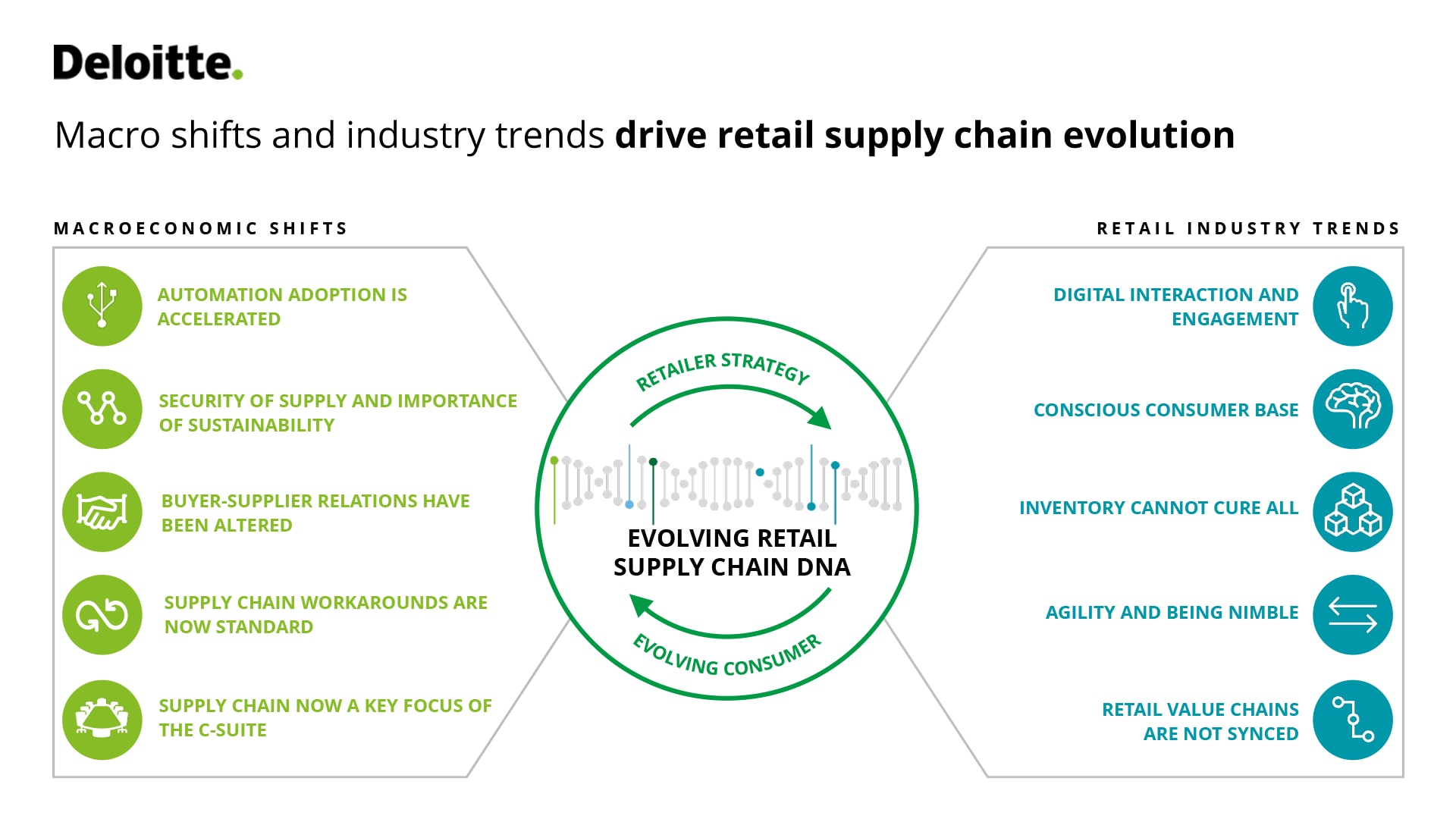
Broader, global supply chain shifts, combined with retail industry trends, have fundamentally altered retail supply chain’s DNA. Acceleration of digital engagement, growing sustainability and trust concerns from conscious consumers, and increased adoption of automation technologies are revolutionizing the industry as leaders closely examine value chain effectiveness, alignment, and agility.
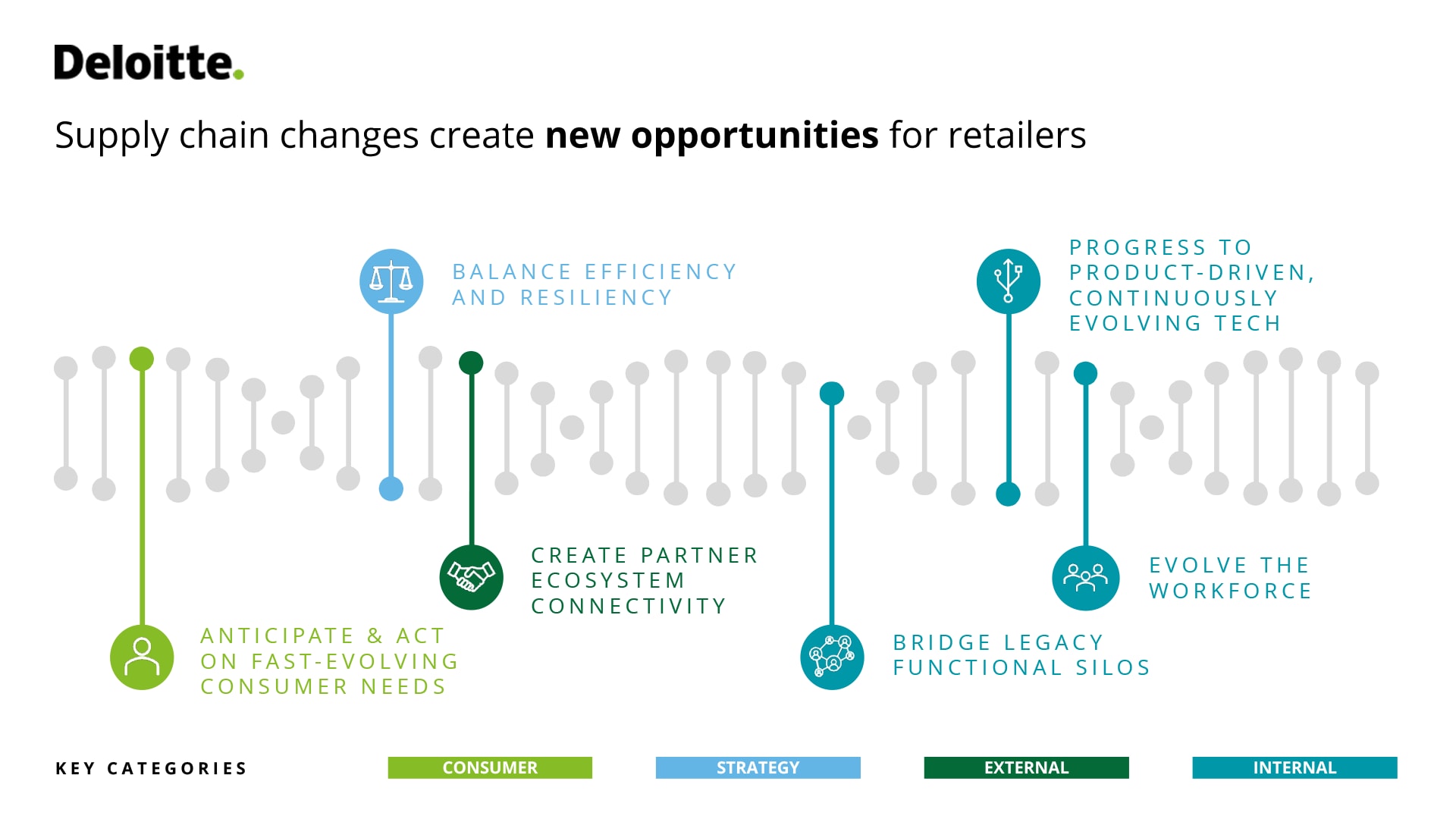
Parallel to supply chain’s evolution, retailers have the opportunity to evaluate and improve how they approach the consumer, develop long-term strategies, address external factors, and meet internal requirements. Below, we discuss capabilities retailers can develop to optimize operations.
ANTICIPATE AND ACT ON FAST-EVOLVING CONSUMER NEEDS — Consumer preferences are dynamic, often defined by digital engagement models, algorithms, and influencers; yet supply chains are still linear and sequential and involve long lead times. To sense and address changing consumer needs, retailers can:
- Build a holistic view of consumer behaviors through use of artificial intelligence and machine learning capabilities to drive advanced inventory planning & demand sensing.
- Increase consumer visibility touchpoints along the supply chain from inventory to last-mile logistics.
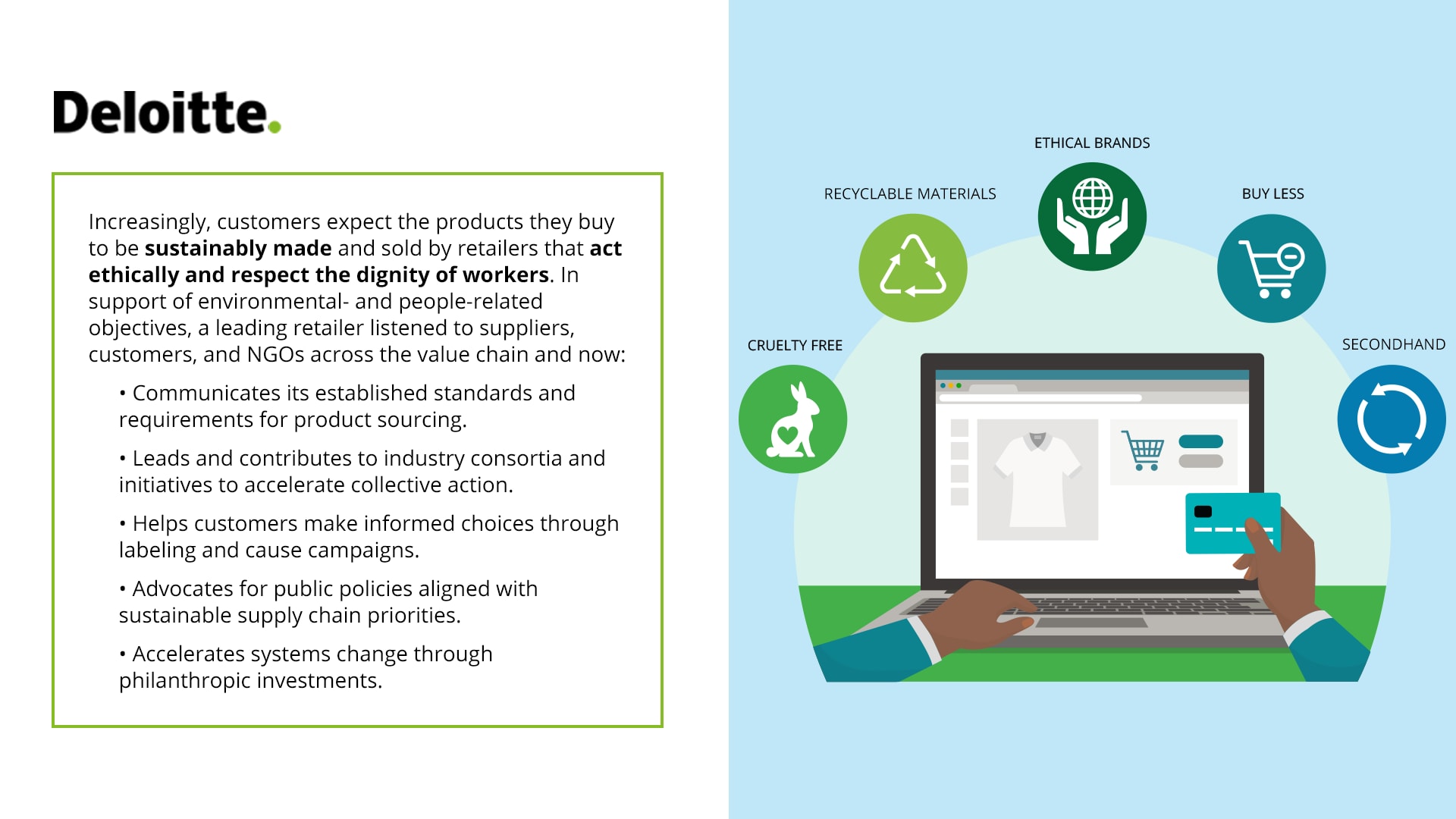
BALANCE EFFICIENCY AND RESILIENCY — For decades, supply chain has had one primary goal: providing the highest level service at the lowest cost. But in today’s dynamic, unpredictable environment, choosing based on cost alone can’t always be the answer. To strike a balance between efficiency and resiliency, companies can:
- Explore automation, visibility tools, and analytics to improve lead time predictability; and finished good and raw material like-for-like identification for diversification.
- Assess network health and inventory placement and consider flexible capacity and postponement strategies.
ADVANCE TO PRODUCT-DRIVEN, CONTINUOUSLY EVOLVING TECH — The value chain is becoming increasingly digitized through advanced analytics, cloud computing, and IoT/smart supply chain devices. Legacy solutions, outdated workflows, and static data structures need to be assessed to maximize effectiveness of investments and to expand to advanced capabilities. Companies can investigate opportunities to:
- Employ product-driven capability evolution to make incremental, value-driven enhancements to capabilities against base technology stack.
- Correctly leverage technology to collaborate inside and outside the organization with customers and suppliers as one ecosystem.
BRIDGE LEGACY FUNCTIONAL SILOS — As businesses adapt to be cross-channel, faster, and more agile, existing siloed supply chain functions must embrace fully integrated, end-to-end processes and shared metrics to incentivize value. Retailers can take steps to integrate functions:
- Evaluate end-to-end solutions that manage the supply chain process from the planning stages all the way through to returns.
- Align central management structures and reporting hierarchies across an integrated supply chain network.
EVOLVE THE WORKFORCE — Workforce transformation is lagging behind technological innovation in workflow automation and analytics. Functions that were constructed before cloud and collaborative computing are still operating using spreadsheets, email, and legacy processes. Retailers can take actions to transform the workforce:
- Understand and embrace technological change, and support the technology with the best resources.
- Create a modern, digital working environment where humans can effectively use digital to amplify efficiency and capability.
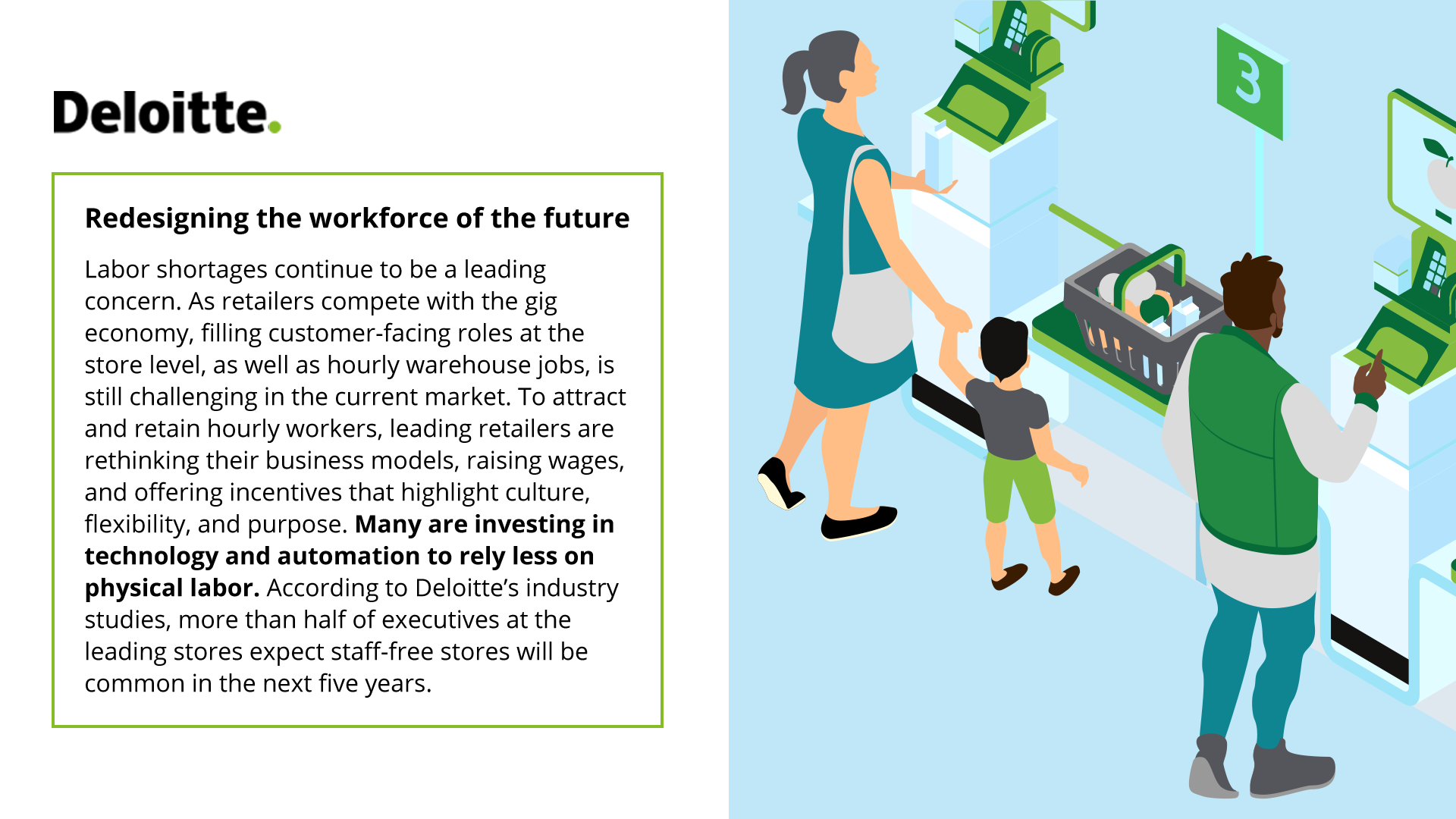
CREATE PARTNER ECOSYSTEM CONNECTIVITY — Traditionally, third-party connections have relied on static, flat-file data feeds and email on employees’ local machines. In this environment, issues are rarely identified or proactively communicated to mitigate the situation. Retailers can strengthen a connected partner ecosystem to achieve:
- Open, real-time communication channels between suppliers, vendors, and the business, especially for high-value/high-volume transactions.
- Improved data management and data visibility across the end-to-end supply chain.
PROACTIVE WAYS FOR RETAIL TO TRANSFORM
Approached holistically, disruptive forces in the value chain can fuel transformation shaped by integrated solutions, bringing retailers increased agility, enhanced resiliency, and new opportunities.
Meet customers where they are. It’s no secret that long lead times push customers away. Digital engagement models, algorithms, and influencers increasingly define customer preferences, so traditionally linear supply chains are becoming interlinked networks. As retailers evolve, they can anticipate customers’ needs and plan ahead with real-time visibility into the supply chain. Innovations in machine learning and artificial intelligence drive demand-sensing and advanced inventory planning. With a holistic view of consumer behaviors, retailers can increase consumer visibility touchpoints along the supply chain.
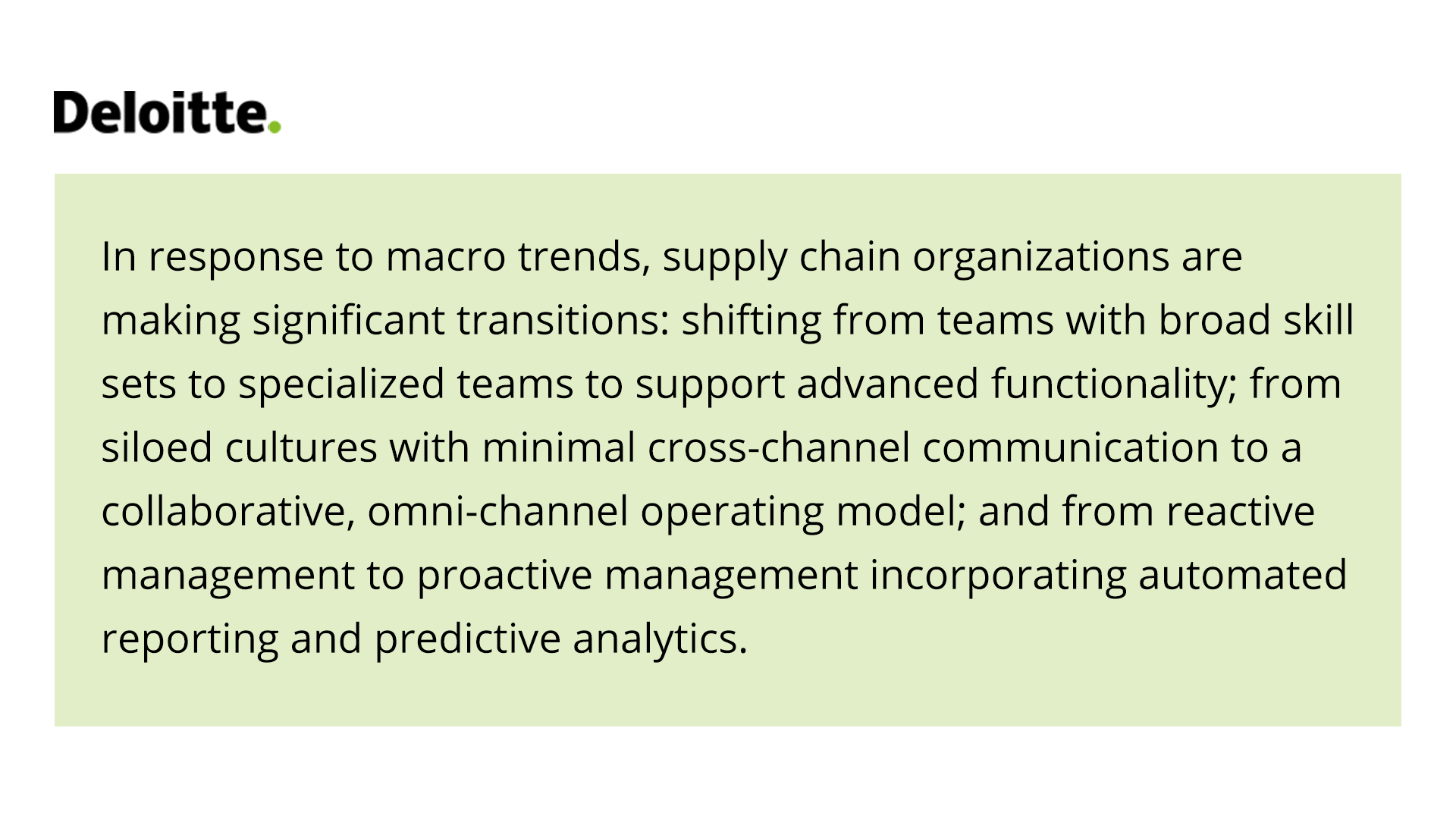
Get priorities in order. For decades, retailers have prioritized low-cost supply chains, often sacrificing quality, service level, or time to market. In today’s dynamic environment, customers have multiple supplier options and are less concerned with price. New strategies can increase resiliency. Organizations, particularly those in apparel, are turning away from long lead-time supplier production models and rethinking their SKU portfolios, altering their value chains to enable key strategies like postponement. A holistic assessment of supply networks can lead to greater value over time, building longer relationships with happier customers. Automation, visibility tools, and advanced analytics can improve resiliency and lead time predictability for finished goods and raw materials, resulting in increased diversification.
| Leverage enabling tools. Legacy infrastructure can limit retailers’ ability to innovate, compromise cross-channel communication, and inhibit timely risk identification and mitigation. While modern applications can enhance supply chain connectivity, failing to optimize technology investments can lead to significant missed opportunities. An assessment of current technology stacks can identify capability gaps and lay the groundwork for incremental, value-driven enhancements to supply chain capabilities. | 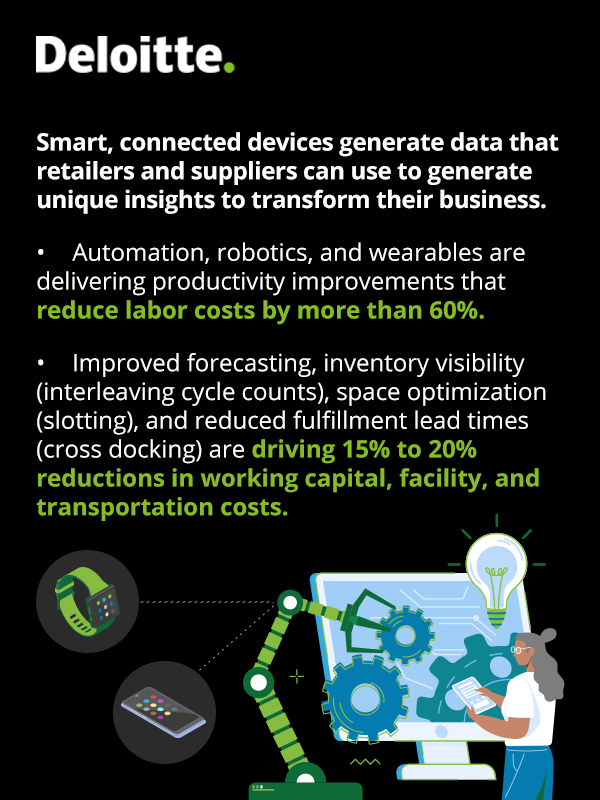 |
Collaborate with buyers, suppliers, and other functional parties. Parties along the value chain—from third-party manufacturers to logistics service providers and carriers—lack the connectivity needed to sense and respond to dynamic consumer requirements. If we break down the silos, retailers and suppliers can work together to digitally shorten the lines of supply, leveraging technology to optimize inventory levels, removing sources of verification and payment delays, and predicting the impact of disruptive events. Sharing visibility enhances cooperation and strengthens relationships among vendors, suppliers, and customers.
LOOKING BEYOND THE SUPPLY CHAIN
While retailers continue to face significant challenges in the value chain, they are not always traceable to the supply chain. Global supply chain shifts and macro trends in the industry lead to opportunities for retailers to assess current operations and make adjustments, taking steps toward transformation to help prepare for future disruptions. The solution may be a matter of gaining access to more accurate information, tweaking a process in the product life cycle, or developing agile systems that can handle new customer scenarios. In a world of possible solutions, it is crucial to look beyond the supply chain to identify innovative ways to evolve the workplace, anticipate and meet customers’ desires, and build a sustainable future.
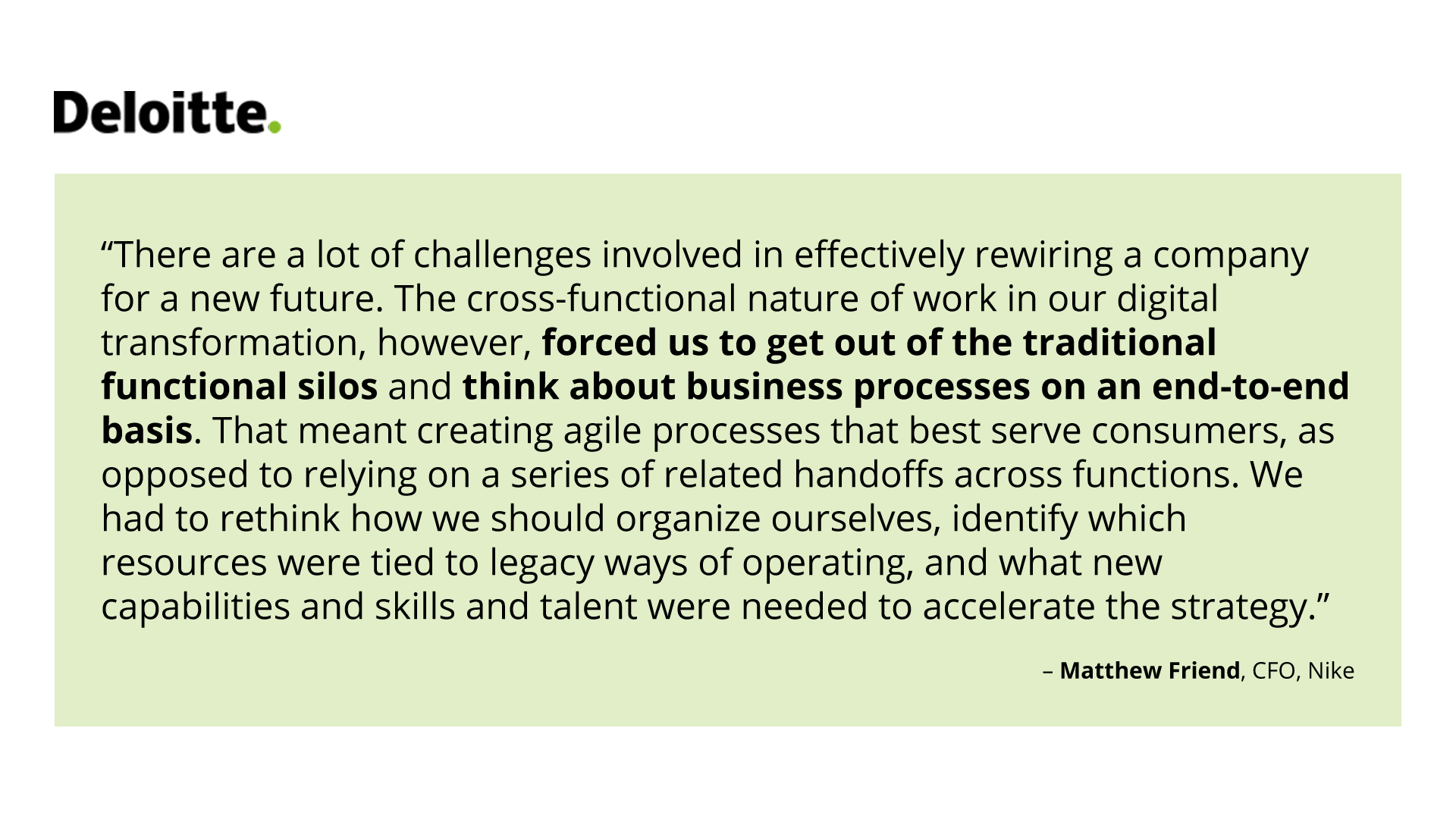
Authors

Kevin Mahoney
Kevin is a managing director within Deloitte’s Supply Chain practice. With an impressive 15+ years as a strategic operations and finance executive with a bias for action and crisp execution, Kevin has a proven ability to drive supply chain transformations, identify core process improvements, creating implementable technology solutions, and articulating the value delivered. He is able to lead large-scale initiatives on time and within/under budget and has built a reputation for combining strategy with innovative technologies to yield practical and sustainable results. Core competencies include integrated business planning, OMNI channel network & fulfillment strategies, end to end process optimization, financial, operational, sales and inventory planning, transportation sourcing and procurement, network optimization.

William (Bill) Kammerer
Bill is the supply chain leader for Deloitte Consulting LLP’s Retail & Consumer Products practice and helps clients improve their overall supply chain and create Digital Supply Networks. He has led supply chain transformation programs for some of Deloitte’s largest and most prominent clients. Bill brings a unique mix of industry, consulting, and technology expertise with a broad range of clients across the Retail, Consumer Products, and Life Sciences industries. His experience spans working in logistics organizations to include trucking and 3PL companies and leading complex consulting programs. Bill was also a logistics officer in the US Army.

Karla Martin
Karla leads Deloitte’s Fashion Apparel and Footwear practice, with more than 25 years of experience working with retail and consumer products clients. She has more than 20 years of expertise across the entire retail value chain including: product to market pipeline, merchandise planning, product and marketing innovation, omnichannel, format innovation, customer experience and loyalty, and store operations. Karla is also a passionate advocate for increasing diversity and inclusion in the C-Suite and board room.
